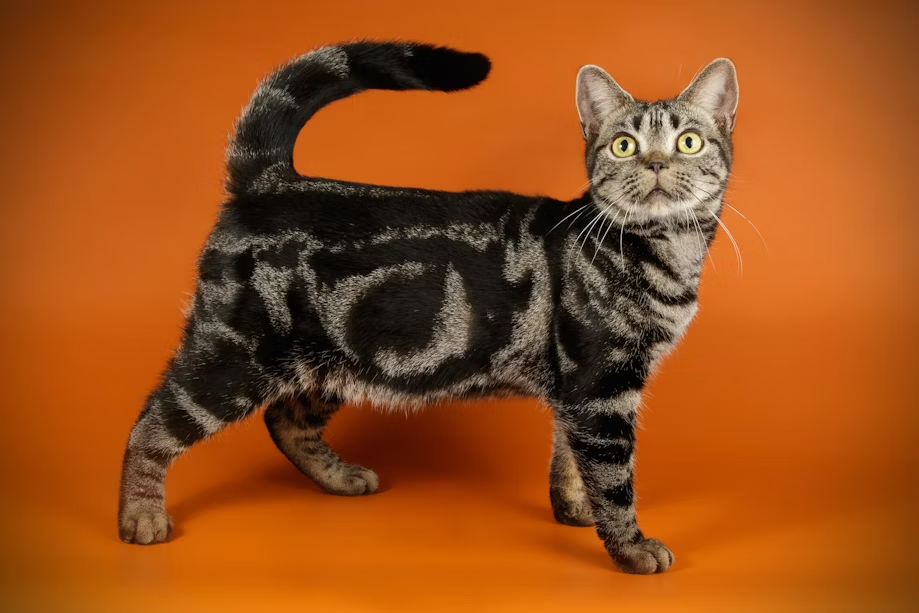It’s easy to imagine current-day house cats as miniaturized versions of their bigger, wilder counterparts. (I often call my blue Siberian a “grayscale lion” due to his luxurious mane and the regal persona with which he rules the household.)
And though our pet cats do have wild origins, there’s much more to their backstory than a difference in size and temperament—as you’ll see in this post.

How (and when) cats became domesticated
In true cat fashion, the ancestors of modern domestic cats probably adopted us rather than the other way around. Research suggests small wildcats of the Felis silvestris population began living among farming communities near the Fertile Crescent roughly 10,000 years ago.
An abundance of prey (rodents) likely attracted these cats to the agricultural communities. And the humans abiding there no doubt appreciated and encouraged the extra help with pest control. So, the cats ultimately domesticated themselves, in a sense, through natural selection. The populations that thrived among the farming communities probably had more human-tolerant temperaments.
Note: This is quite different from the history of modern dogs. When domesticating canines, humans intentionally developed various skills—such as herding and hunting—through controlled breeding.
Over time, cats began to accompany people on trading routes and continued doing what they do best: hunting rodents. In the process, they gained access to the rest of the world. And eventually, domestic cats became commonplace on six continents (and occasionally visited the seventh, Antarctica). But genetically, these cats were still very similar to their wildcat cousins because humans didn’t directly intervene in their development.
Note: It’s possible that a second event of feline domestication occurred in ancient Egypt—where cats enjoyed their status as sacred creatures.
Tracing the history of feline expansion is quite interesting, involving Vikings and early North American colonists. (I’m excited to dive more into this topic in future posts. So, check back soon!)

The evolution of cat traits and creation of breeds
The earliest record of feline domestication (a cat buried with their presumed owner) was found in Cyprus and dates back to about 9,500 years ago—a time when no native cats existed on the island. But it took a while before cats started looking like the diverse, clever characters we know and love today.
The classic, or blotched, tabby, one of the domestic cat’s most characteristic coat patterns, likely first appeared in the Middle Ages due to a mutation in the Taqpep gene. And since that time, an assortment of other coat colors and patterns have emerged—with many showing up before the creation of cat breeds.
Did you know? Wisdom Panel™ Complete for Cats can help you understand the origin of your cat’s traits—as well as decode their ancestry and genetic health. Learn more →
Humans began to meaningfully influence such physical traits during the last 150 years or so through controlled breeding. In the late 1800s, breeders began keeping records of the family lines they used when selectively crossing cats to accentuate various physical traits and develop today’s feline pedigrees.
Since they’re relatively new, many cat breeds are still closely related to their random-bred counterparts. And in some cases, random-bred cats can look very much like pedigreed cats simply by happy accident. (But only cats with a recorded pedigree can earn the designation of “purebred.”)

Take the American Shorthair, for example, whose random-bred ancestors likely accompanied early European settlers to North America.
Over centuries, these cats proved to be both great hunters and beautiful companions. As a result, people began selectively breeding them to advance their best qualities. Fast-forward a few years, and the resulting breed—originally known as the Domestic Shorthair—was one of the first to be recognized by the Cat Fanciers’ Association, established in 1906.
Soon after, breeders selected the best models of the hardy Domestic Shorthair to develop a breed with a specific set of traits. And in 1966, the CFA changed the breed’s name to “American Shorthair”—distinguishing these purebred cats from the random-bred American Domestic Cat population.
So, though American Shorthairs may appear very similar to their random-bred predecessors, they come from pedigree family lines that follow breeding standards for appearance. And they generally have more predictable temperaments than the domestic shorthair.
Still curious about cat breeds?
Visit our cat breed library to read more about the histories of 70+ cat breeds and populations.
Browse Cat Breeds



